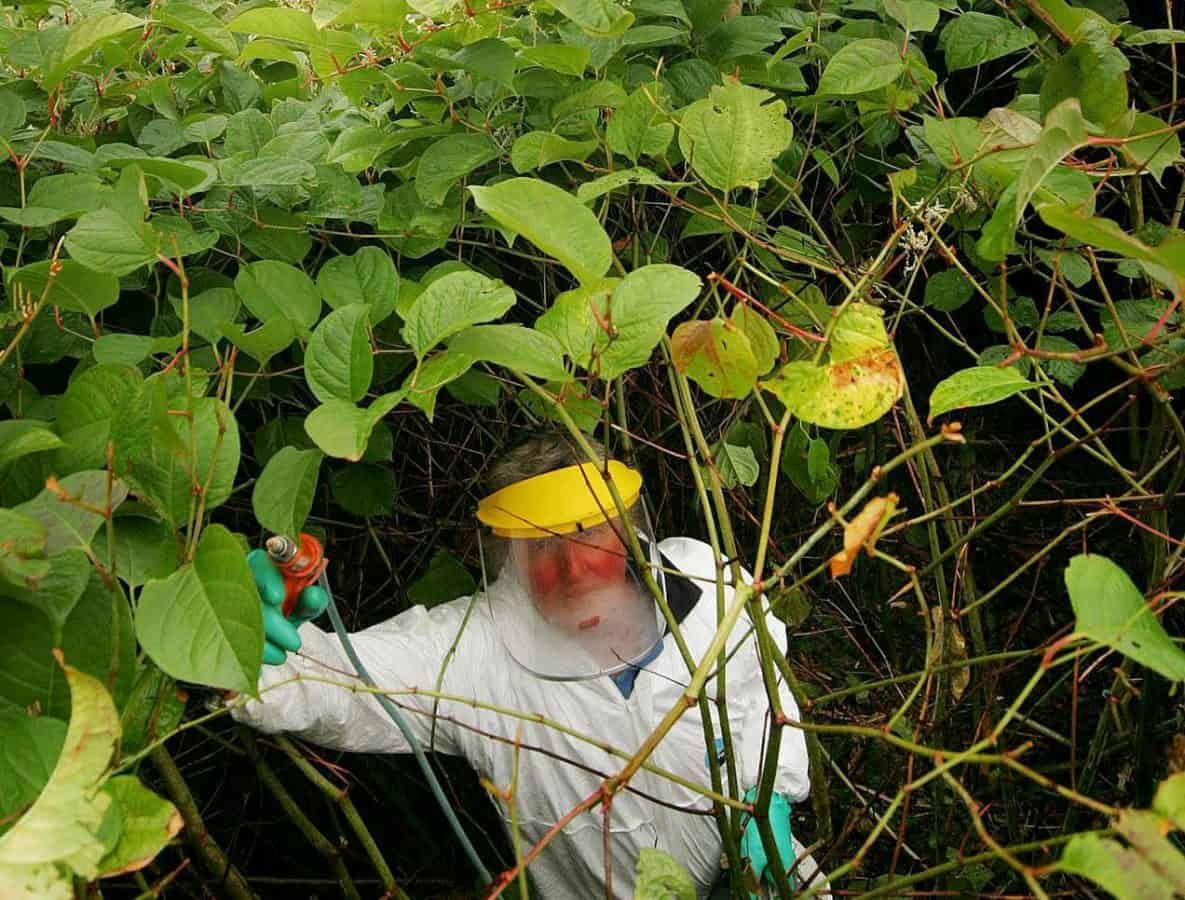
Areas blighted by Japanese knotweed is being mapped by a new interactive map to provides a heatmap of infestations across the UK.
The online map lists the thousands of infestations of the notorious invasive weed that plagues gardens and land up and down the country.
The plant has a vigorous grow, growing four inches a day in summer, and its roots or rhizomes spread far underground causing structural damage to buildings.
In the UK it is believed if the plant which can be three foot tall is found growing within 23 feet of a property it poses a risk so mortgages are often refused unless there is a plan in place to eradicate it.
But even if the seller carries out the expensive work, the stigma associated with the plant means that property values can be a tenth less, even after action is taken to control it.
Now home buyers can check whether an area is blighted by the weed on the Exposed: The Japanese Knotweed Heatmap website.
It allows people to search by postcode to discover the number of reported sightings nearby or to report any new sightings.
Knotweed hotspots are marked from yellow through to red depending of the severity of infestation.
Hotspots are outer London, Merseyside and Lancashire, Bristol, a belt between Newport and Swansea , another from Nottingham up to Sheffield, around Fort William and Ventnor on the Isle of Wright.
In Cardiff, there are 414 occurrences within a 4km area of the city centre.
The tool was created by Nic Seal of Environet UK who said: “This heatmap will enable us to build a nationwide picture of the Japanese knotweed problem and give the general public the information they need to assess the risk locally, particularly when buying a property.
“It will also be a useful tool for homeowners who want to be aware of infestations near their property which could spread, putting their home at risk.
“The site is already well populated, but this is an ongoing project. The more people who report sightings, the more effective it will become.”
The Victorians introduced Japanese knotweed as an ornamental plant but now grows rampantly along railways, waterways, in parks and gardens and is notoriously difficult to treat.
The Environment Agency brands it as “indisputably the UK’s most aggressive, destructive and invasive plant.”
It can be spotted by red or purple asparagus-like shoots that appear from the ground and grow rapidly, forming hard canes from April or May.
As the canes grow, heart-shaped leaves gradually unfurl and turn green.
It blooms in late summer, when it becomes covered in tiny creamy-white flowers
During the late autumn, the leaves fall and the canes turn brown and die, although they remain standing.
By Tony Whitfield